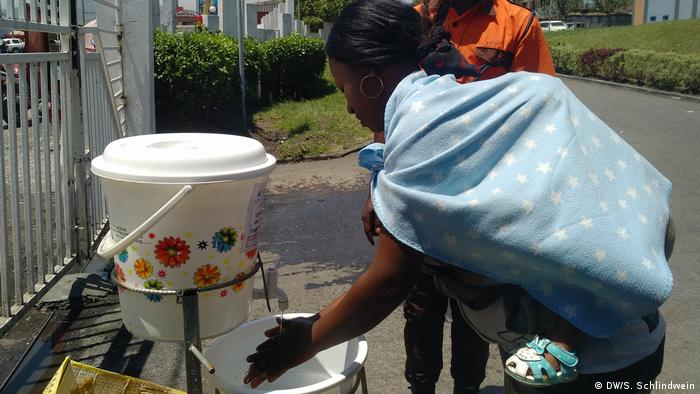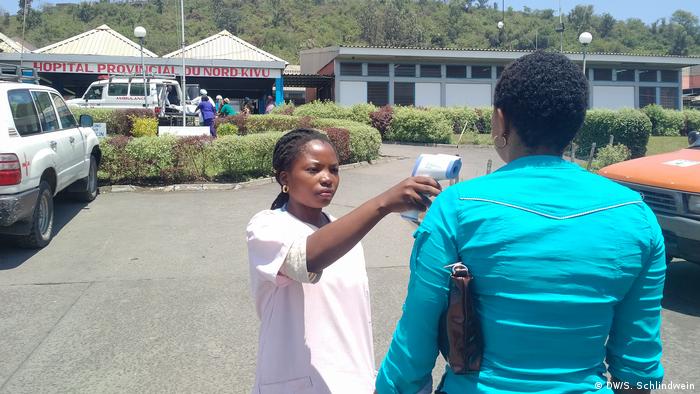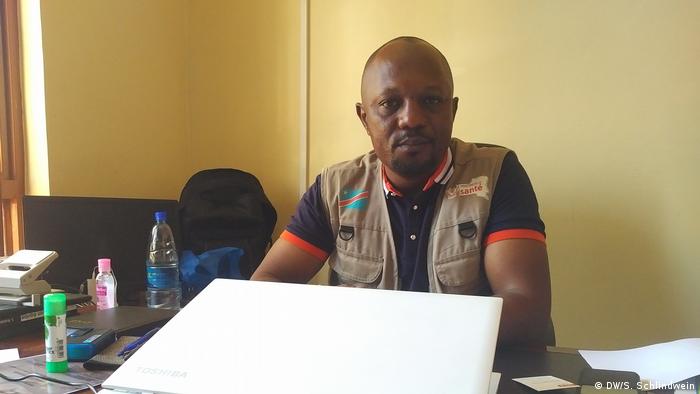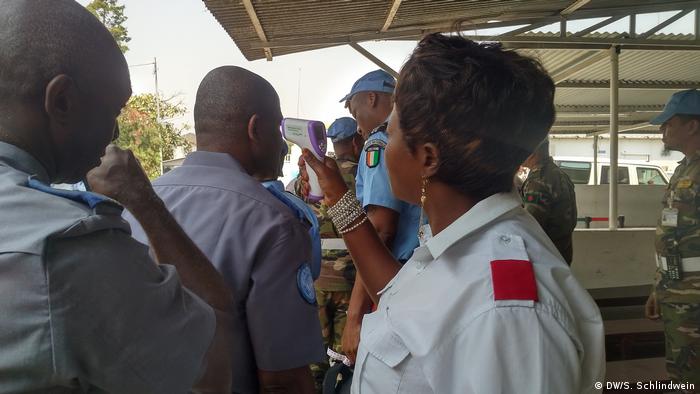The number of Ebola cases in the East of the Democratic Republic of the Congo is increasing: in the Meantime, there are cases 73 suspected. The disease is in the middle broken out in the war zone – the the quick response is difficult.

The entrance gate in front of the provincial hospital in Eastern Congo million to the city of Goma is locked. Even the ambulance with blue light and siren comes through only after a control. Employees of the Ministry of health to keep anyone who wants to get in: First you have to wash the fever, the hands, the soles of your shoes to disinfect.
Everywhere in the Eastern Congo, to Rwanda, especially in the city of Goma, on the border, arrangements will be made so that the Ebola Virus is spreading this far. A single case in Goma would increase the risk of extreme that the deadly disease is spreading throughout the Region and in the neighbouring countries.
The democratic Republic of the Congo has experience with Ebola
The Ebola epicenter is located just 240 km away: to the North of Goma, in the Region around the city of Beni. In the meantime, the Congolese Ministry of health reports cases of 73 suspected. Of these, 46 have been confirmed, and 27 patients are under observation. They show symptoms such as high fever, headache and bleeding. According to the world health organization so far, 16 people have died of the Virus, with 27 other Ebola as the death is suspected to be the cause.
“The Numbers are still climbing,” says Richard Kitenge, Congolese doctor and one of the Ebola Commissioner of the land. But he is confident. The democratic Republic of the Congo from Ebola. The Virus comes out of the jungle in the heart of Africa and is named after a river that flows through the Congo.

Fever as a precautionary measure in front of the hospital in Goma
Just two weeks ago, the Ministry of health has declared another outbreak of Ebola in the North of the country as contained. There was tried out for the first Time a vaccine, the Doctors, nurses and family members of the patients have received. This is now being applied since the day before yesterday, also in Beni. “With the current Impfabdeckung we hope we are next week to the extent that the number of new cases reduced,” says Kitenge. And yet another drug now comes in the world for the first Time: A molecule that is administered to infected patients as a treatment. “There is a Test. But by the systematic treatment, we can evaluate the results later,” says Kitenge.
Learn from the mistakes
Numerous non-governmental organizations, the United Nations and the world health organization are in use, in order to get the outbreak under control quite rapidly. Many Doctors, nurses, experts and logisticians were already in the North of the Congo, where the recent Ebola outbreak – vaccines and the equipment was already delivered. This is an advantage, says Ebola emergency coordinator Karin Huster of Doctors Without borders (MSF).
MSF has worked in the Region around Beni already before the outbreak and had staff on site, when the first suspected case of the beginning of the month confirmed. The international non-governmental organization was able to respond quickly. In the middle of the epicenter, in the village of Mangina, some 30 kilometers from the city of Beni, MSF set up a treatment centre: an isolation ward with four beds, which are occupied all.

Richard Kitenge is one of the coordinators for the fight against Ebola, which has been appointed by the Ministry of health
It, the already ailing health centres in the area is important, says Huster. This is a lesson from the mistakes of the past: “The last Ebola outbreak in West Africa, the health centers were not well protected. The people came for a little treat and then, in the case of other Ebola-suspect patient”. MSF is now called collecting stations, in which patients with Ebola symptoms will be isolated, says Huster by telephone from Beni. “You can be in the case of confirmation of the suspicion directly in an Ebola treatment centre transferred.”
Aid organisations are already on-site
The crisis situation in the Eastern Congo makes it difficult for the outbreak. In the provinces of North Kivu and of Ituri, in which Ebola is spreading at present, over 100 rebel groups active. The army, with the help of UN blue helmets in military operations against the militias. Especially the Region around the town of Beni in the past few years, the focus of brutal violence: massacres of the civilian population, systematic kidnappings by the rebels and the fighting.
The village of Oicha, 45 kilometers from Beni, in which Ebola cases have been confirmed, was for a long time the front line between the army and the rebels. A large part of the population fled. The Ebola Doctors can only drive accompanied by an armed UN blue helmets there. This complicates the measures for the containment of the dangerous disease is enormous, confirm, NGOs and the world health organization WHO.
An advantage, however, is that numerous organizations were already in front of the Ebola outbreak on the ground, including a German non-governmental organisations and aid agencies such as the Diakonie katastrophenhilfe. These were now able to step in quickly.

Also, who wants to enter the airport of Goma, must first of all have a fever to measure
The danger of the spread is enormous
First of all, it is a question of the further spread of the Virus, says Guido Kraus of the Diakonie katastrophenhilfe. The Ebola Virus is transmitted through body fluids. “It is now important that the people understand, and its security, and how you can avoid,” says Kraus. Diakonia is involved in Awareness-raising activities and establishment of sanitary installations, wash-hand basin in front of health centers, churches and schools. Also the wells need to be repaired. The Region has little water, the population already has to wash little opportunity to.
The danger, Kraus, lies in the long incubation time. To Infected develop the first symptoms and feeling ill, it can take up to three weeks. “This means that even if someone is infected, he will not notice this immediately, and possibly even in a different Region of travel.”
By the war, the population is already since years on the run. This now increases the risk that Hunger and other diseases from spreading further. Ironically, the place Mangina – the epicenter of Ebola was previously a refuge for Displaced persons, Mirijam Steglich of the world hunger help the in a agriculture project: “the fact that it was there for a long time relatively stable, is an important of agricultural production.” The corn harvest is now, the farmers must plant new seeds. Mangina eats quasi-the city of Beni. The risk: “If the population is not quite sure that the health systems can also narrow really Ebola, then it could come in the worst case, the population to leave here,” says Steglich. The harvest would not retract, the consequences for the supply of Maize and other food would be fatal.

